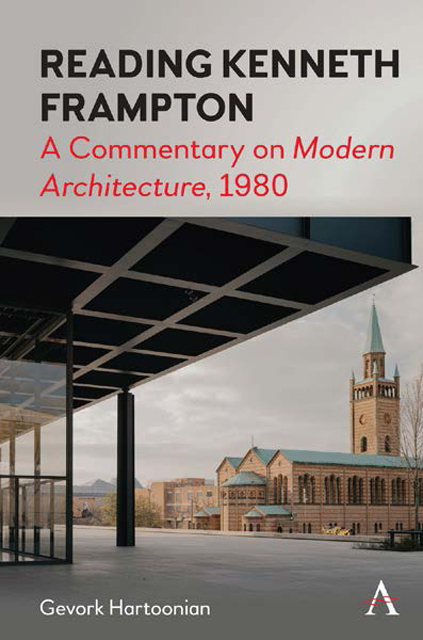Summary
In many works, searching from this viewpoint for this or that trace, for something that can give you information about an author, you practice an essentially biographical investigation of the author himself, you don't analyse the meaning and significance of the work as such.
— Jacques LacanThis book is neither a biographical investigation of Kenneth Frampton, a renowned historian, architect and architecture critic, nor a study of his oeuvre in its entirety, a huge task that would take into consideration many volumes, including the five editions of his Modern Architecture: A Critical History, in addition to the numerous published books, essays and forewords that he has written for scholarly books to date. Instead, it is a modest-yet-timely project: focusing on the first edition of A Critical History (as it will be referred to throughout this volume), published in 1980, it is a search for clues and positions that will provide the reader with a partial view of the significance of Frampton's historiography of modern architecture— “partial” because, in this volume, each chapter of the first edition of his book has not been examined. Although particular attention has been accorded to Frampton's work, the scope of this book is comprehensively narrow. Rather than reading the first edition of A Critical History through the lens of contemporary fashionable ideas and transient themes, the approach here is somewhat archeological: zooming into his book and simultaneously building out, an attempt has been made to historicize Frampton's positions, with a critical eye on the contemporary state of architectural praxis. The following reading of Frampton also offers a “prism” for comprehending architecture in global capitalism. Critically significant to this retrospective reading of Frampton's book is the fact that in the course of its subsequent editions, the first two parts of the first edition have remained almost unchanged, and also that its content comprises the core of the Modern Architecture movement, which still influences the course of future actions. For instance, among the many themes discussed in the second part of Frampton's book, his interpretation of events from 1930 to 1945—a watershed in the developmental process of modern movement architecture—is highlighted.
- Type
- Chapter
- Information
- Reading Kenneth FramptonA Commentary on 'Modern Architecture', 1980, pp. 1 - 12Publisher: Anthem PressPrint publication year: 2022

